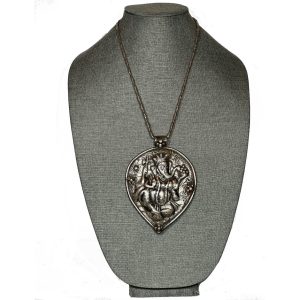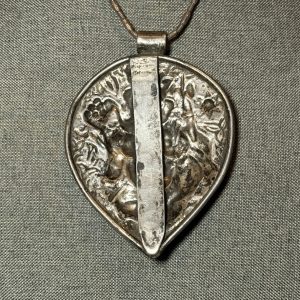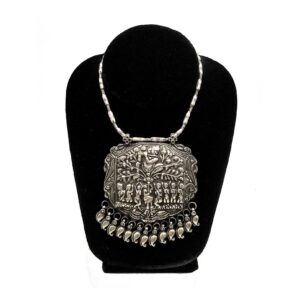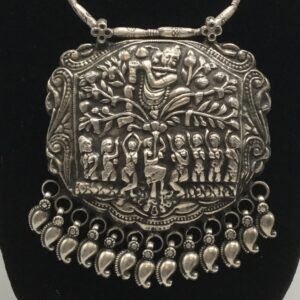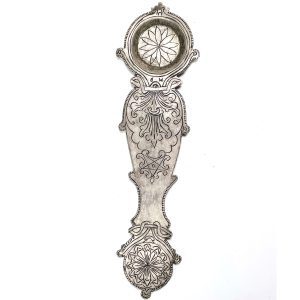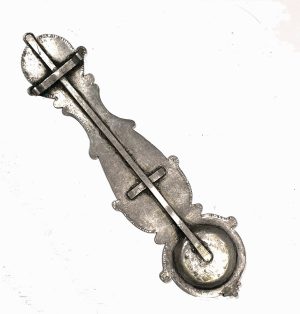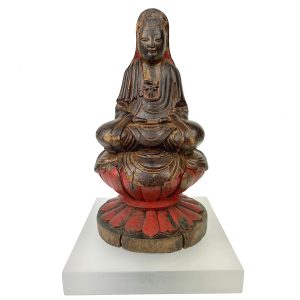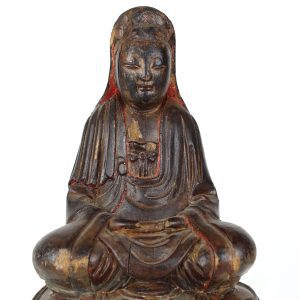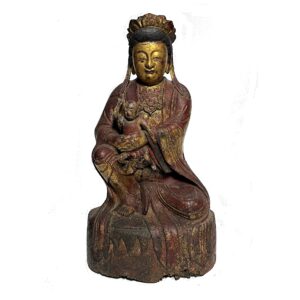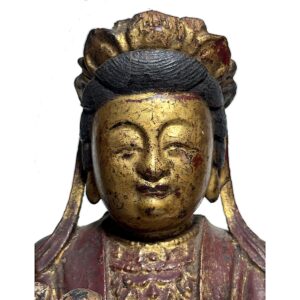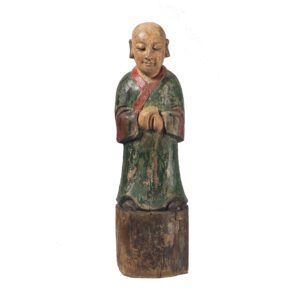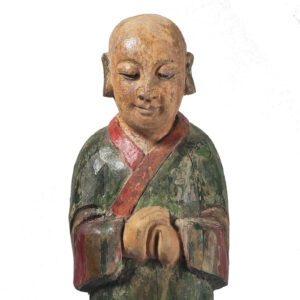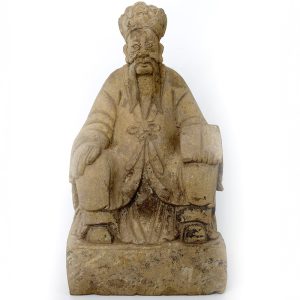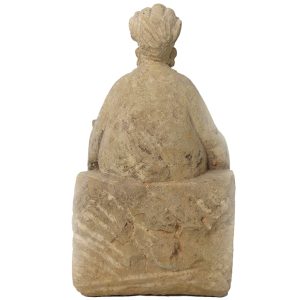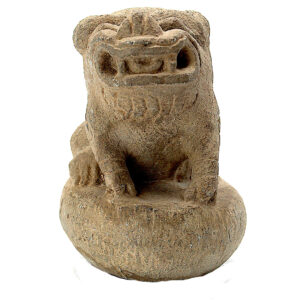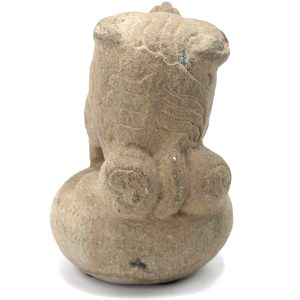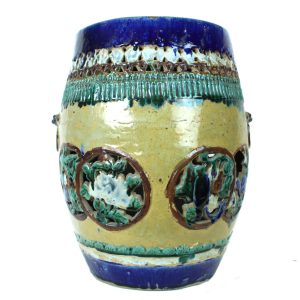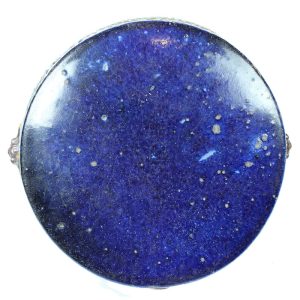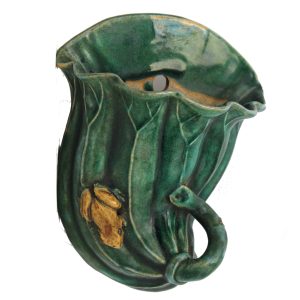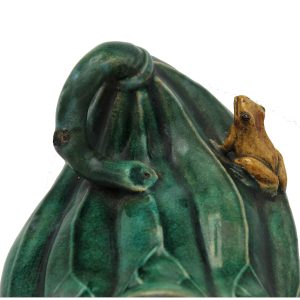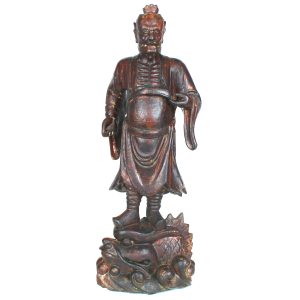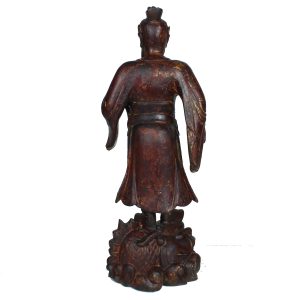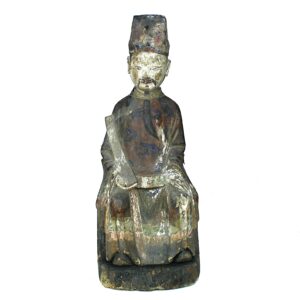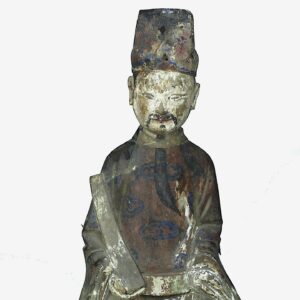Showing 169–180 of 430 results
-
Sale!


$440.00 Original price was: $440.00.$375.00Current price is: $375.00.
Ht: 5.125″ W: 3.75″ D: 0.625″ | FREE SHIPPING within continental U.S.
Large and heavy silver pendant with 4 armed Ganesh in betel shape frame reaching for his favorite treat modak sweet dumplings with coconut. As the remover of obstacles Ganesh pendants worn for good luck . The coin silver chain is included.
-
Sale!


$695.00 Original price was: $695.00.$595.00Current price is: $595.00.
Ht: 3.625” W: 3.5” D: .75″ | FREE SHIPPING WITHIN CONTINENTAL U.S.
Rare antique high grade silver amulet, high relief of Lord Krishna sitting in the Tree of Life playing his flute serenading the Gopis. Truly magnificent pendant symboling Hindu belief in the interplay between deities and the human soul.
-
Sale!


$225.00 Original price was: $225.00.$175.00Current price is: $175.00.
H: 6.25 ” W:1.625 ” D:.25 ” | FREE SHIPPING WITHIN CONTINENTAL U.S.
Antique silver puja spoon used to offer water to the gods to show respect. Hindus use water to cleanse and purify one’s body, mind and spirit. The lotus symbolizes Lakshmi, the Goddess of wealth and prosperity.
-
Sale!


$495.00 Original price was: $495.00.$395.00Current price is: $395.00.
H: 8.675″ Dia: 4.5″ | Free SHIPPING WITHIN CONTINENTAL U.S.
Delicate white robed Guanyin in meditation on radiating lotus throne. Provincial humble, modest, relatable, yet beautiful matronly figure.
-
Sale!


$2,650.00 Original price was: $2,650.00.$1,975.00Current price is: $1,975.00.
H: 14.5” W: 8.25” D: 5” | CALL 213-568-3030 OR EMAIL [email protected] FOR SHIPPING.
Rare and beautiful provincial Songzi Guanyin is modest, compassionate and humble with lotus leaf crown, unadorned robe and pedestal with simple leaves. Her baby resembles the infant Buddha. Was probably on a home altar of wealthy couple desiring a (male) baby.
-
Sale!


$1,850.00 Original price was: $1,850.00.$1,450.00Current price is: $1,450.00.
H: 27.5” W: 8.5” D: 6.5” | CALL 213-568-3030 OR EMAIL [email protected] FOR SHIPPING.
inspirational, serene monk with realistic youthful smiling face on tall pedestal symbolizing his spiritual significance. Size, pose and consecration suggest was in spiritual space in a home or community shrine. His serenity and grace transforms environment around him.
-
Sale!


$725.00 Original price was: $725.00.$675.00Current price is: $675.00.
H: 8” W: 5” D4” | FREE SHIPPING within continental us
Wonderfully aged and weathered stone Tudi Gong reflecting many traits of this beloved Earth God holding a tael for wealth and fortune. He sat happily on an outdoor shrine, and would be happy to sit in a garden to bring an aura of past times to a new family.
-
Sale!


$195.00 Original price was: $195.00.$155.00Current price is: $155.00.
H: 4.5″ Dia: 3.25″ | FREE SHIPPING WITHIN CONTINENTAL U.S.
This stone flu lion is not an elegant protective beast, it’s just a friendly pet hanging out. He probably lived in a garden and is looking for another one with people like old wonderful pieces to remind them not to take themselves too seriously.
-
Sale!


$1,275.00 Original price was: $1,275.00.$895.00Current price is: $895.00.
H: 19.5″ DIA: 15.75″ | CALL 213-568-3030 OR EMAIL [email protected] FOR SHIPPING
Ceramic barrel shaped garden stools with cut cobalt blue auspicious double coin images as wealth symbols and 2 Tao tieh masks in relief with pierced rings to symbolically avoid gluttony, greed and desire.
-
Sale!


$285.00 Original price was: $285.00.$225.00Current price is: $225.00.
H: 8.25” W: 6.75” D: 3.5” | FREE SHIPPING WITHIN CONTINENTAL U.S.
Wall pockets are used to hold chopsticks and flowers to bring good fortune. This Shiwan pocket has frog and a lotus that together symbolize nurturing energy and transformation. Great cozy accessory for feng shui and a wonderful wedding gift.
-
Sale!


$1,095.00 Original price was: $1,095.00.$795.00Current price is: $795.00.
H: 15.5″ W: 5.5″ D: 4.5″| CALL 213-568-3030 OR EMAIL [email protected] FOR SHIPPING.
God of Literature, Books and Writing, Education, Learning and Examinations, Wen Chang is the patron saint of scholars. Thin, surly, demon like with exposed ribs and facial distortions, he stands on a dragon’ head among waves. Unique wonderful carving that would look spectacular on a desk.
-
Sale!


$295.00 Original price was: $295.00.$215.00Current price is: $215.00.
H: 12.875″ W: 5″ D: 2.75″ | FREE SHIPPING WITHIN CONTINENTAL U.S.
Probably placed on a home altar with other carving, this Taoist official holds a long, curved hu, wearing a high hat, collared robe with painted cobalt blue clouds and official’s belt. Consecrated with original script inside.
End of content
End of content

